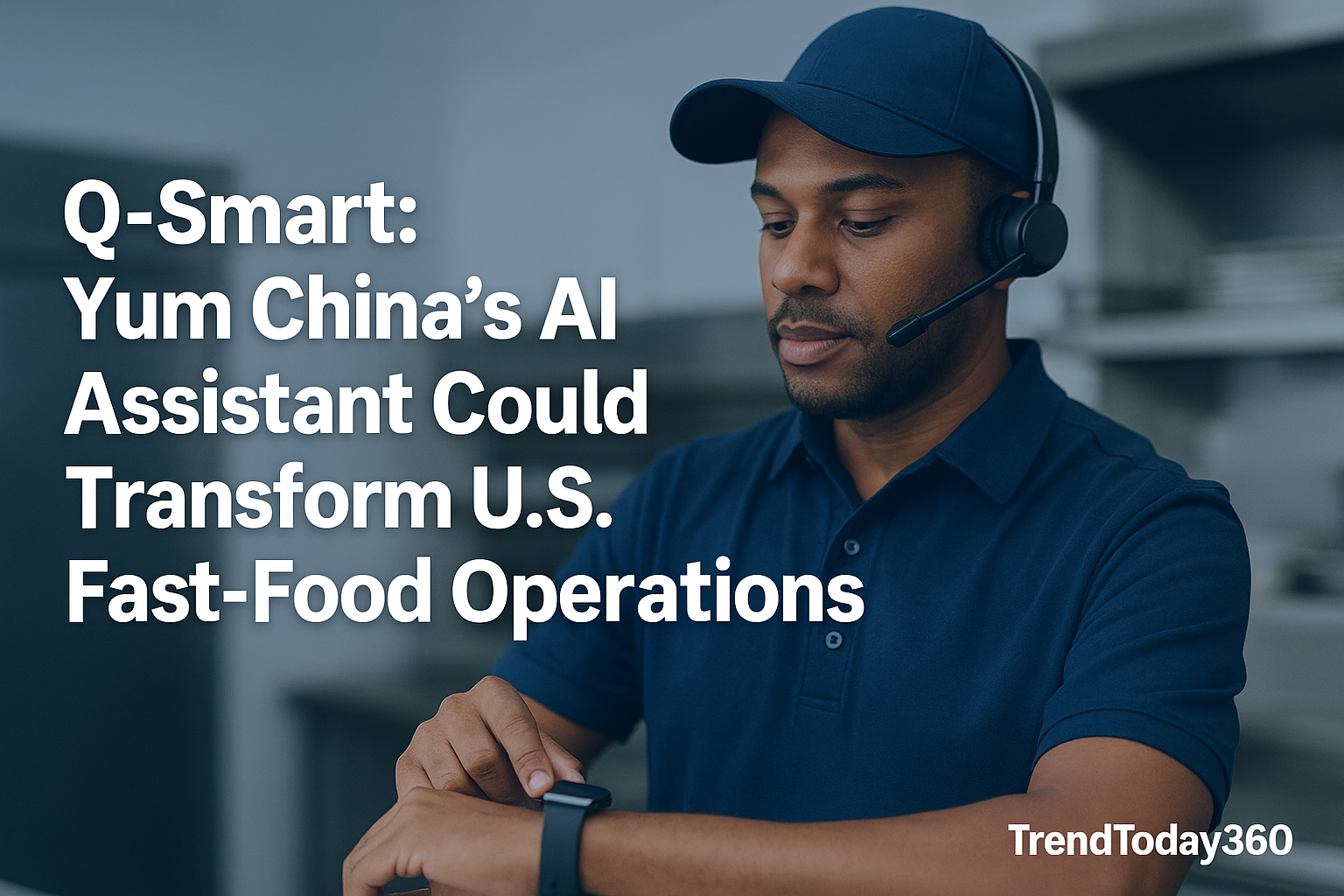In a move that could redefine fast-food operations, Yum China has launched its Q‑Smart AI assistant—a voice-driven, wearable-compatible system designed to streamline real-time restaurant management. While the rollout has gone largely unnoticed in U.S. media, it marks a pivotal leap in integrating AI into frontline food service environments.
This announcement came during the company’s first-ever AI Day in Shanghai, where executives unveiled how Q‑Smart will empower store managers across KFC and Pizza Hut outlets in China. With over 13,000 locations nationwide, this AI deployment could serve as a global model for automation in quick-service restaurants (QSRs).
What is Q‑Smart?
Q‑Smart is more than just an assistant—it’s a centralized intelligence system tailored for operational decisions. Unlike most AI tools built for data analysts or executives, Q‑Smart runs on voice commands and integrates with wearables, allowing restaurant managers to:
- Generate real-time staff schedules
- Track inventory and food safety compliance
- Monitor kitchen performance and service KPIs
- Receive alerts and make adjustments on the fly
Rather than replacing jobs, Q‑Smart complements managers by handling repetitive decision-making, freeing them to focus on team coordination and service quality.
Why This Matters in the U.S.
While Yum China operates independently of Yum Brands in the U.S., the implications are significant. Major American restaurant chains—like McDonald’s, Chipotle, and Starbucks—are already exploring automation. Few, however, have deployed AI in daily restaurant management as Q‑Smart does.
The system offers a path to:
- More efficient labor use
- Stronger compliance tracking
- Real-time cost control
With labor costs rising, AI-first restaurant tools like Q‑Smart may soon become essential. This could encourage other fast-food giants to rethink operations entirely.
Wearables Meet AI for Instant Management
The most innovative part of Q‑Smart is its wearable integration. Managers can view dashboards, alerts, and assignments on smartwatches or AR devices. This keeps their hands free while staying fully connected to the restaurant floor.
If throughput slows, Q‑Smart recommends labor shifts. If temperatures drop below food safety thresholds, alerts trigger instantly. It’s designed for action, not analysis.
Industry Impact and Global Potential
Still in early rollout, Q‑Smart aligns with a growing shift toward “ambient AI”—tech that works quietly in the background. Experts believe if results remain strong, Yum Brands could extend Q‑Smart to international locations or inspire copycat systems across the QSR space.
Q‑Smart helps Yum China address urban labor challenges while boosting quality and compliance, making it an ideal model for chains across the U.S. and beyond.
A Strategic Pivot in Food Tech
Q‑Smart reflects a major trend: tech investment in food service is moving from gimmicks like kiosks to deep operational tools. Instead of flashy front-end experiences, companies are focusing on back-end efficiency and control.
This assistant empowers managers—not engineers—by automating routine tasks in real time. It’s a blueprint for scalable AI in service industries, not just food.
What’s Next?
If pilot data shows success, Yum China may expand Q‑Smart to its full store network. Its flexible platform could evolve to support delivery optimization, smart kitchens, and loyalty platforms next.
U.S. brands may not be far behind. With AI adoption accelerating in retail and logistics, Q‑Smart could become the model for U.S. food automation in 2025.
The quiet revolution has already started in Shanghai. The question is: who’s watching—and who will follow?
Updates By TrendToday360.







Leave a Reply